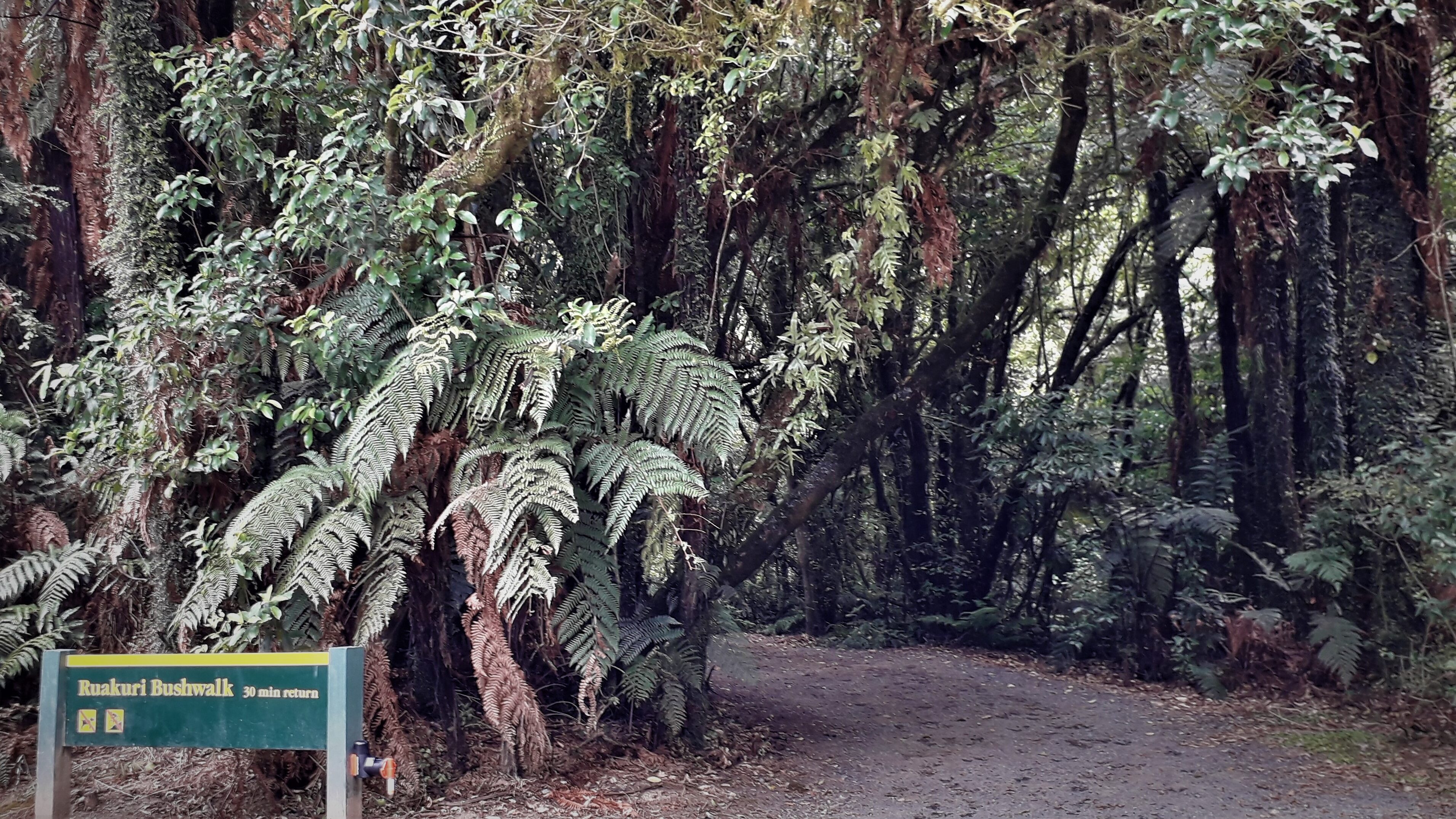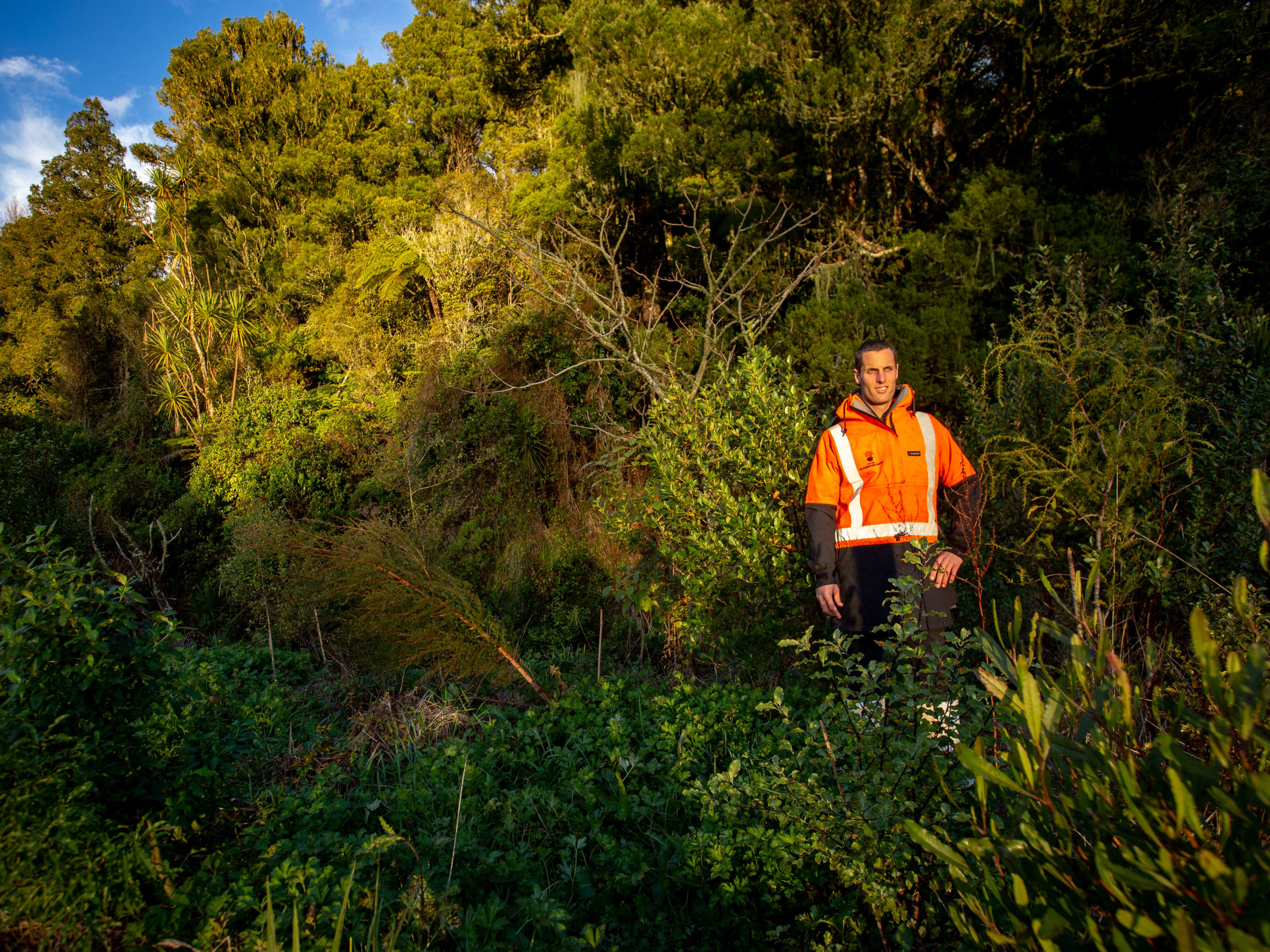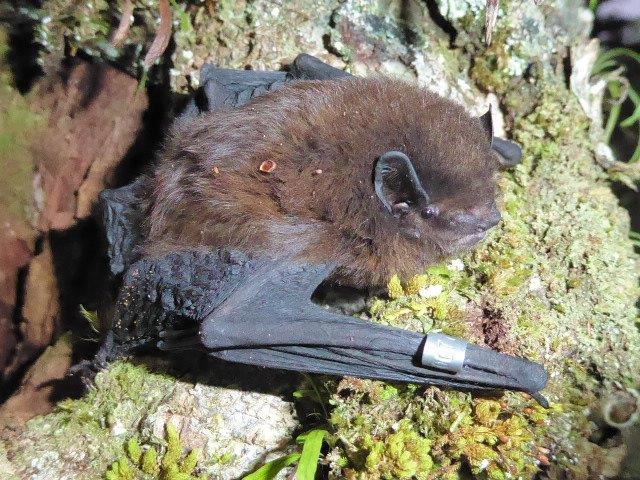The Ruakuri Scenic Reserve, which includes New Zealand’s internationally renowned Ruakuri Cave, is an epic example of cave and karst landscape and sanctuary to New Zealand’s endemic and vulnerable fauna and flora, including long-tailed bats and bush falcons. It’s limestone country with caves and stalactites, limestone outcrops, tomo holes and disappearing streams.

In recent years, this area has been benefiting from renewed predator control thanks to a, unique in New Zealand, partnership between the Discover Waitomo Group and the Department of Conservation.
“We want to bring the birdsong back to our community. It’s about protecting a special place and bringing the highest standard of predator control to our community,” says Carl Fischer, Discover Waitomo Environmental Manager, who is responsible for the conservation aspects of the Waitomo Caves.
“Firstly we reduced the possum numbers,” Carl explains, “then, over several years, we reduced rats. We reinstated and expanded all the baitlines and carried out trapping. In the last two years, the extensive predator control, carried out by Discover Waitomo, in partnership with DOC, has reduced rat activity in the reserve from 86% to undetectable (0%) levels.”

In conjunction with the Ruakuri Holden Trust, the partnership currently deploys 60 Goodnature A24 traps and hundreds of bait stations and possum traps but they’d like to increase that coverage substantially.
“The aim is to have total coverage of A24 traps taking the number of these to around 260,” says Carl. “Goodnature traps are safe, easy to use, humane and self-setting. This greatly reduces labour input and reliance on pesticides and will deliver a more sustainable and long-term predator control programme.”
A Give-A-Little page has been set up to raise funds for the project with Discover Waitomo committed to matching up to $15,000 donated.
“It’s a local initiative with our residents,” Carl says. “We want it to be inclusive, bringing people into participate and share. For example, deploying the new A24 traps would make a great staff day out. We’re totally open to working with other individuals and organisations on the fundraising and the deployment.”
With rats numbers currently tracking at 0%, people are already noticing a change in the reserve.
“There are anecdotal reports of an increase in bird song and the return of geographically rare bird species to the region,” Carl confirms.
The presence of vulnerable long-tailed bat pekapeka-tou-roa also indicates that the ecosystem is in good health.

“The bats are very vulnerable,” Carl explains. “They were detected in the reserves in the region in the past, but no monitoring had been done for a long time. No-one was sure if they were still resident or in what numbers. We’ve managed to establish that they are still here and with the increase in predator control, their prospects are much improved!”
The forest itself will also benefit from a reduction in introduced browsers and seed-eaters.
“The Ruakuri Reserve is quite a small reserve in area,” says Carl, “There’s a short walk through it and it’s stunning! In my opinion it’s one of the best very short walks in New Zealand. You see caves, stalactites, lots of streams.”
While tourists from around New Zealand and across the world come to Waitomo for the caves, glowworms and black water rafting, a newly formed partnership with the Auckland University of Technology, means that groups of students will also be visiting each year to check out the plantlife and wildlife on extended ecology field trips.
“It’s happening at the moment, for the first time,” says Carl. “There are about 20 students here for 7-9 days and they’ll be carrying out vegetation and invertebrate monitoring and 5-minute bird counts. This year’s results will be the baseline, then in future years there will hopefully be improvements and some exciting updates.”
There are also plans to increase social networking about the project and keep contributors to the fundraising updated.
“We want to build a network of people who are passionate about the place,” Carl says.
Tiakina nga manu, ka ora te ngahere Ka ora te ngahere, ka ora nga manu: Look after the birds and the forest flourishes. If the forest flourishes, the birds flourish.
Visit the Ruakuri Reserve ‘Give-A-Little’ page if you’d like to donate.

